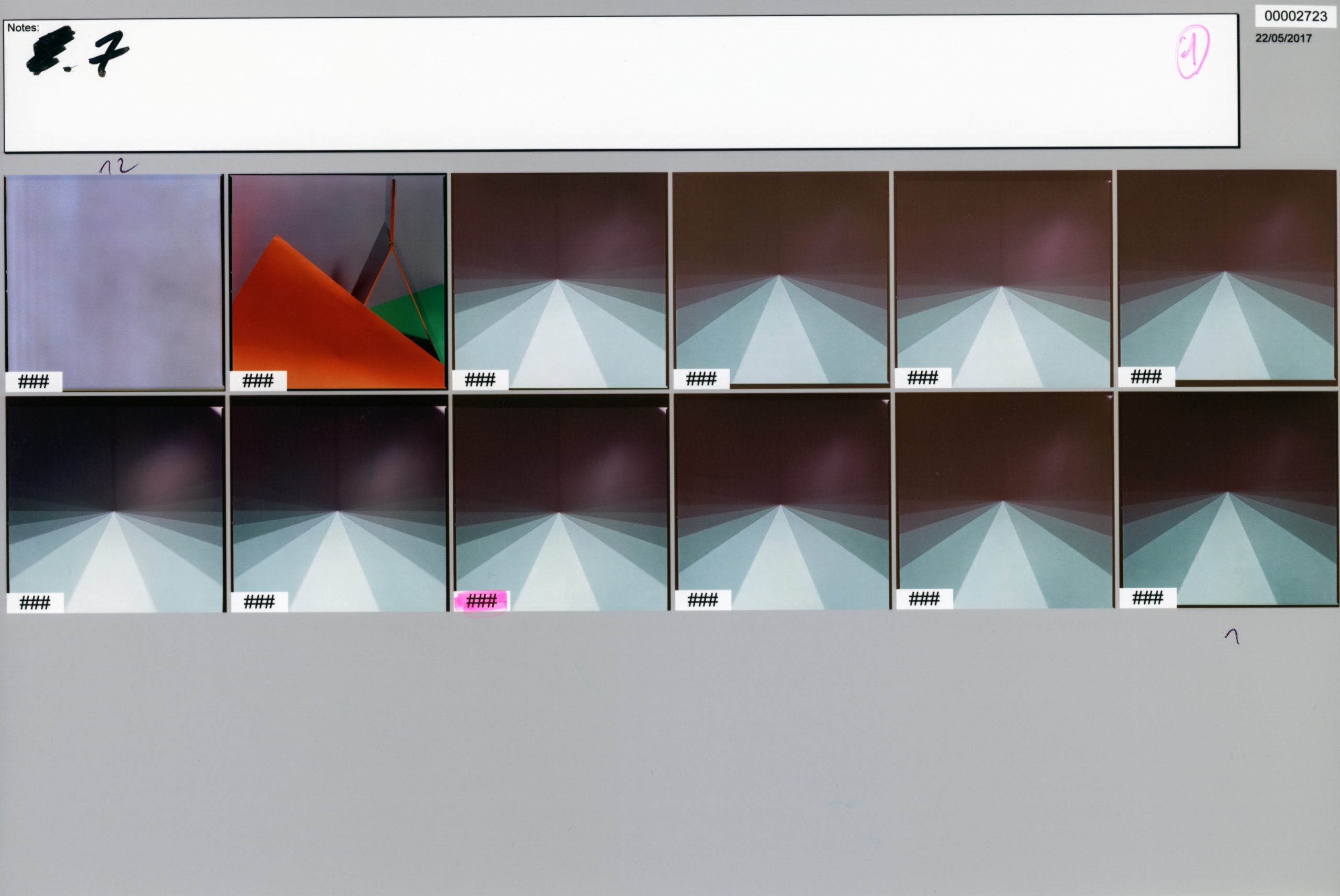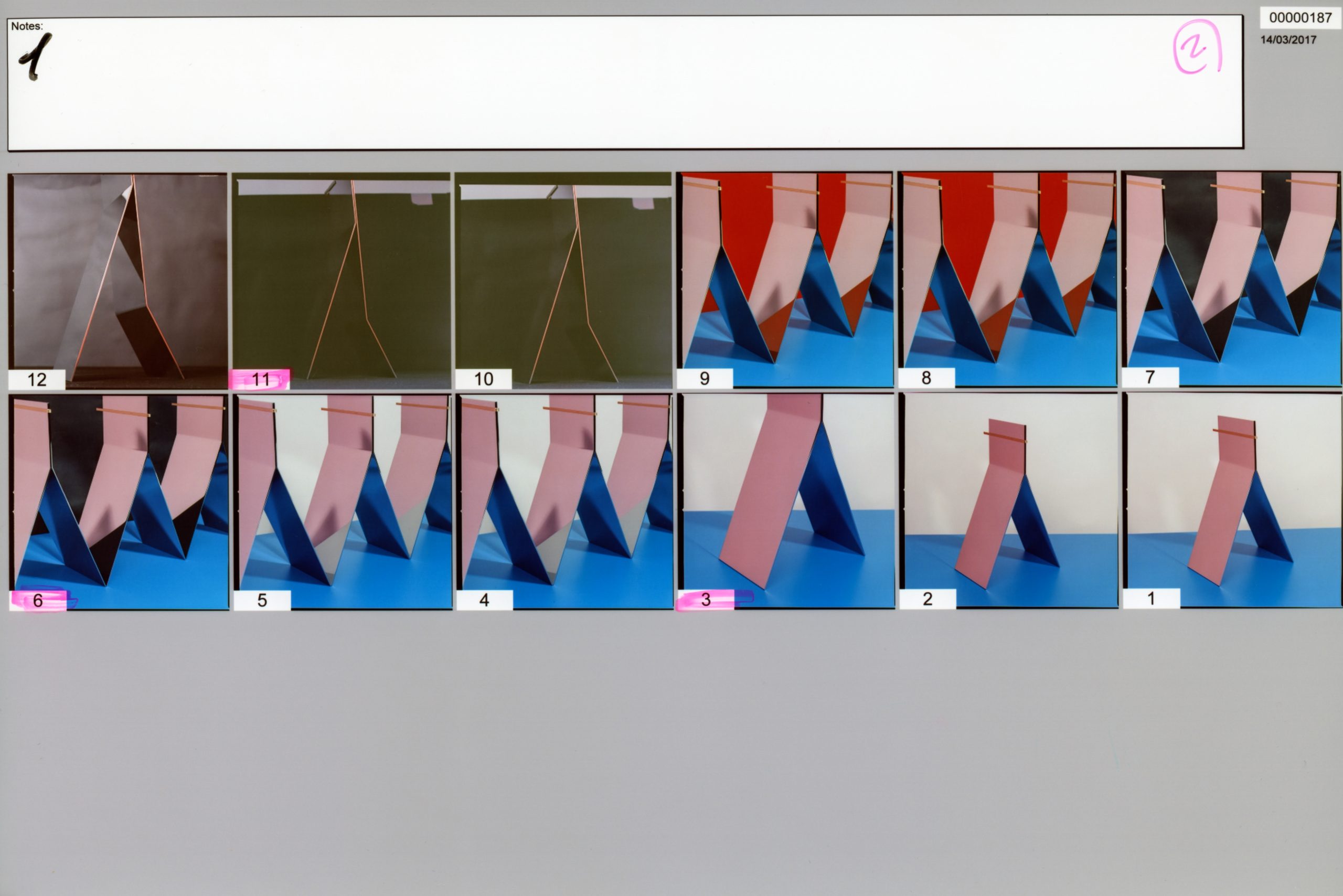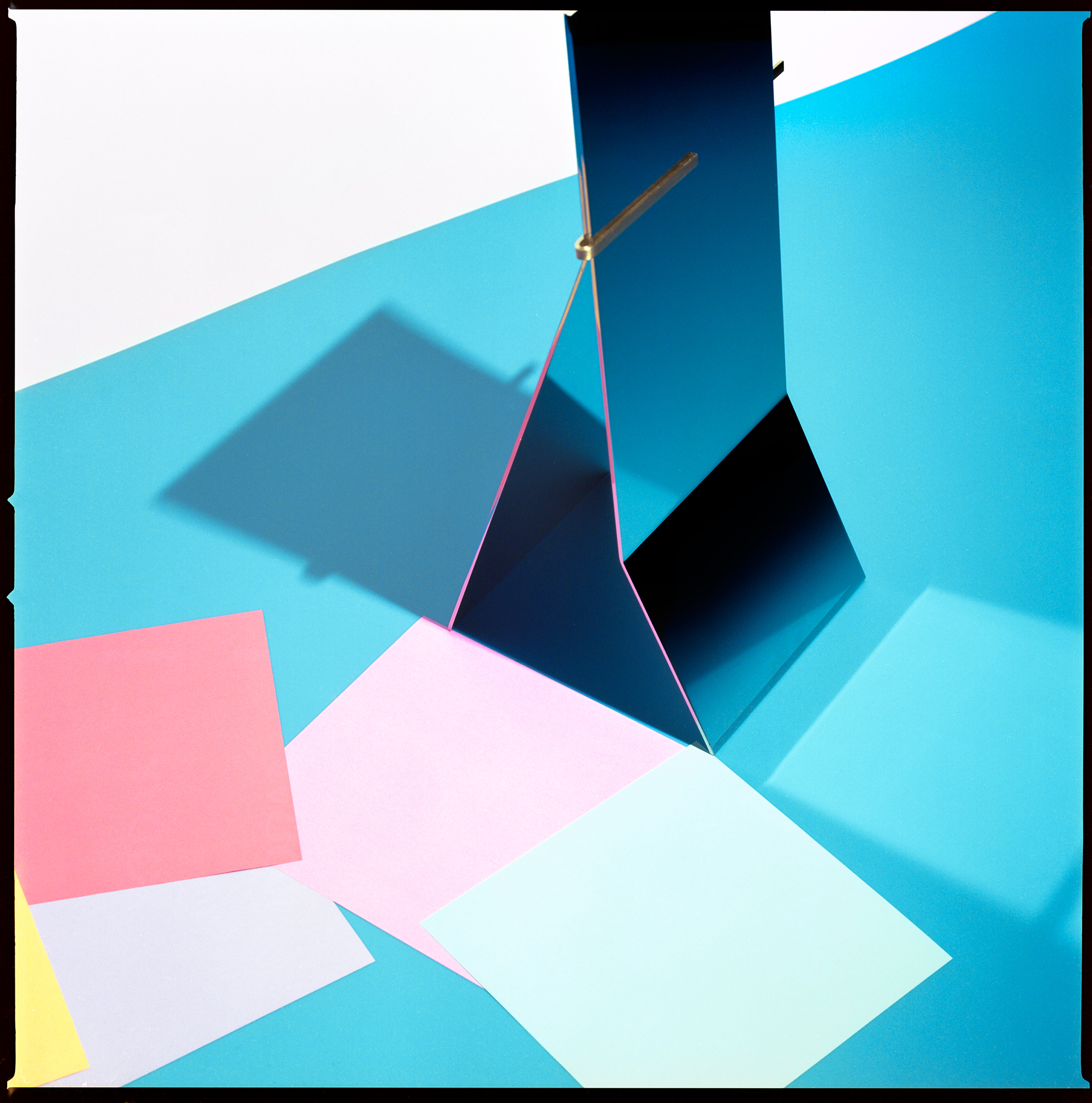Designer Sanghyeok Lee, who "inflates" non-physical ideas and experiences into objects, and photographer Dahahm Choi, who "compresses" objects in front of him into flat images, stand in opposition to each other. The natural property of reflection exists as a point where their works can be shared and a major factor for the individual works’ expansion. The two artists’ works are complementary to the extent that they put the cracks and ruins, created from different textures of the three-dimensional (solid) and two- dimensional (flat), in the shade. This can be construed as the outcome of the detailed studies of reflection and the elements around (or including) light, shadow, color, speed, and balance. The exhibition Reflection Studies held at ONE AND J.+1 in Seoul from February 28 to March 30, showed the research process over the course of two years and a series of outcomes.From the moment one enters the exhibition space, the reflection that the two artists have elaborately created overwhelms the audience. The continuous reflection, which does not even allow a brief break, creates an illusion that the beginning and the end do not exist, like in a maze. However, if you look closely, pushing your body toward, you can discover their multi-layered research on reflection that the two artists have accumulated and their development process. Its first starting point is Lee’s object piece I’ll be your mirror (2016). In this artwork, the mirror, which is the main material of the work and the most commonly encountered reflector in everyday life, is presented differently from any other mirrors that we know. It rejects the existing passive frame in which it is used for a thing or person, and finds the subject of reflection by itself, realizing its own function. This character is revealed by its shape, which reminds of a walking person. The anthropomorphic form expresses the activeness of the object piece and its desire to be the subject. Furthermore, it creates an atmosphere by encouraging affective response rather than being given as an object. In particular, the attempt to establish an active relationship among the reflector, its subject, and the surrounding space brings life to the word “reflection”. Owing to this new meaning, their research is developed in an organic and flexible manner.
1
However, as soon as Choi's FS series (2019) is installed on top of it, a compact and intensive feature is added to the exhibition. The artist pays attention to the physical mechanism of reflection shown on Lee’s object. As the title of his artwork, Femto Second, which means one quadrillionth second (10-15), suggests, he captures the phenomenon and landscape of reflection observed in the category of time and speed. His working process reveals such an interdisciplinary and structural approach to the subject of observation. He first explores the properties of reflection that change according to the surrounding environment through a polaroid camera. Subsequently, his medium film camera captures exchanges of the senses which trace the layers of light, shadow and color created in the flow of time and speed. In post-production, digital editing is used to record the two-dimensional image perfectly. This step-by-step production process seems to unfold the flow of photographic history selectively. However, the outcome is quite different from the linear nature of history that is vertical and irreversible. Choi continuously mixes, dismantles, and pastes through different processes through which he visualizes the non-linear aesthetics that exist at the base of the reflection phenomenon. It endows the artwork a new position, expanding to the realm of sensual photography rather than explanatory photography.The mirror object created by Lee and its characteristic penetrate the basis of the exhibition while Choi captures them and records the senses formed on that base, and reveals them to the outside. The research on reflection, which has been carried out at different levels, converges into a single work in the exhibition space. It is true that the installation work made by the mixture of Lee’s stainless steel mirror and Choi’s series of FS looks heavy and dull at first glance, probably due to the gravity conveyed from the size and volume. However, it works as a kind of MacGuffin and part of their strategy that deceives those who only have seen the inside of the exhibition space from the outside of the gallery.
2
In fact, the works that were once perceived as lumps are gone when entering the exhibition space, and one can find the artworks and space that are only filled with the intersections and collisions of delicate senses reflected at an unobtainable speed. This does not mean that the weight and volume of the artworks are meaningless. In a way, the actual experience was somewhat unreal because their studies on reflection were focused on the documentations of unmeasurable phenomena, moods, relationships, and senses. However, through the implementations of size, weight, and volume that are compatible with humans, the audience can more closely feel and understand the nature of reflection that the two artists pay attention to.On the other hand, this exhibition does not only showcase the outcome of reflection studies. The two artists strategically induce the audience’s participation and intervention into the artworks and they, meanwhile, present the possibilities of the research's continuity and expandability. This starts with the various mixed installations in the exhibition space by referring to the external form of I'll be your mirror. The strategy of bringing the work within the work to the front of the work unfolds the activeness of the object, which exists only in the compressed image, as well as the active relationship with the space and the subject of reflection in the present time and space. While the audience wanders, the artwork approaches the audience. Instead of letting the audience to use logic or theory, it creates an atmosphere and psychological sensation that can be directly encountered and confronted.Have the exhibition’s audience sensed this? When their research on reflection is reflected back into the mirror, the audience intervenes by taking photographs of that moment. However, this popular so-called ‘injeungshot’ (a direct translation would be “certifying shot,” meaning using photography to record and prove the experience) can be easily and frequently witnessed at any exhibition today. It is, in fact, a popular way of appreciating exhibitions and culture. Rather than comprehending the intention of the artists and the artworks, it can be said that the audience are captivated by the two artists, who have brought a skillful sense and a sophisticated approach to contemporary art phenomena. By doing so, the audience, who are intervened, and their participation create a variation to the content of the exhibition and the artworks that are introduced as the outcome of the past research. The creation starts from three-dimensional to two-dimensional and back again to the three-dimensional piece—and back to the two-dimensional flat image; through the actions and interventions of the audience, which return the image as above, the exhibition and the artworks prove the expandability of the space beyond the dimension and the continuity of narrative development.
3
It also instills the confidence and anticipation that we could identify other possible characteristics and sensations in the reflection involved in all subsequent processes. In other words, this exhibition is not intended to introduce the outcome that completes their research but to conduct another experiment on the reflection studies and confirm the possibility. It also acts as a foundation to identifying the direction of the next reflection studies and gaining momentum to move forward a new level. This makes it clear that the individual layers are organically related to each other based on the study of reflection.The aforementioned strategy for the creation and audience's participation is ultimately realized visually through the exhibition design. The two artists pay particular attention to the display of the works and the use of space as if they fully recognize this fact and its importance. Lee’s mirror and Choi’s FS are often arranged in a series or parallel, or they are separated and faced each other, so that they could exclude the simplicity and tediousness of the exhibition and the artworks. This display method expands the level of various degrees of reflection and the physical spectrum to further stretch the range of sensory exchanges. Moreover, the crossovers among different genres such as sculptures, paintings, photographs, and designed objects lead to a wide range of appreciation. Along with the display method, it is also impressive to see how they use the corner spaces as a point of reflection, which are not even seen from the front. Not only does this fill the volume of the exhibition space thoroughly, but it also creates an environment in which the artists’ research on reflection can function devotedly. Designing carefully even to the end of the display is no easy task. In that sense, their delicately designed exhibition space represents a serious attitude and professional consciousness with respect to the exhibition, the artworks, and the audience.The two artists, who showed different working backgrounds, genres, methods, and career paths, have collaborated with each other driven by their common interest in "reflection" and continued their joint research until today’s exhibition. While maintaining their own fundamentals, they each have embraced and utilized the influence of the other and challenged boundaries that previously had not been crossed by genre limitations, embracing new possibilities. Now, when they face this not-easy-to-achieve level of collaboration and the gradual outcome produced in it, there are countless questions left for the next: How will they interpret the properties of nature that two artists dare not control in their next study? What kind of environment will they articulate? How will they link the subjects? In which category of sense will the experience be realized? And the questions continue.
4


